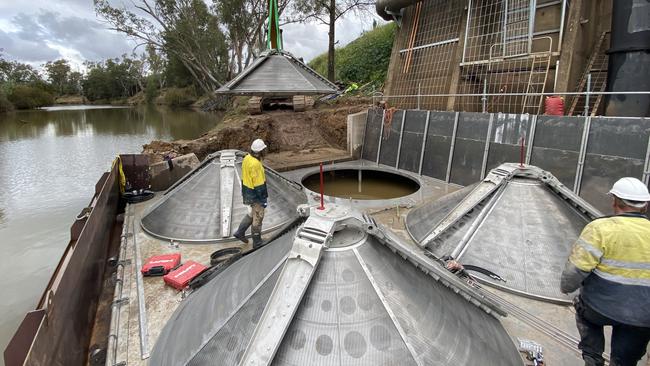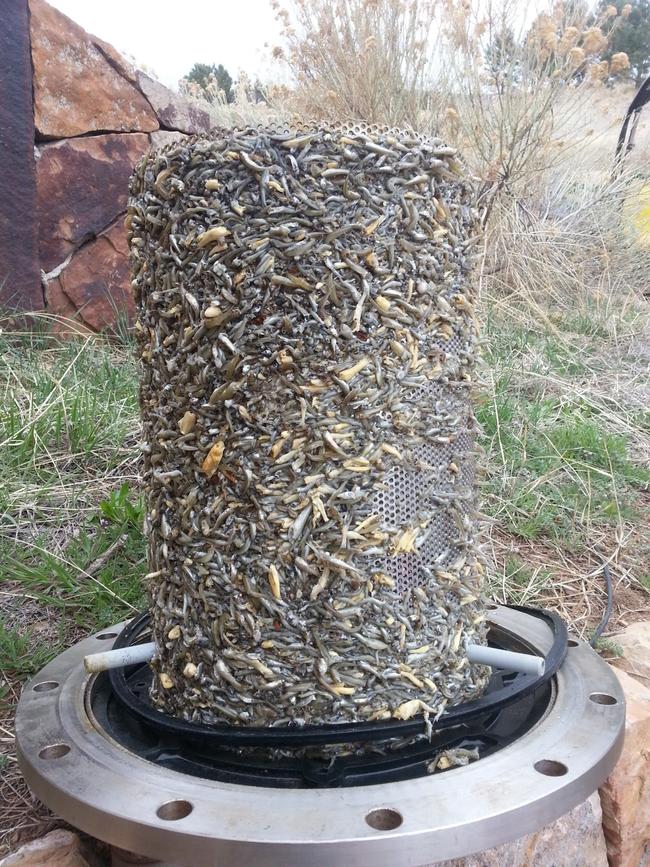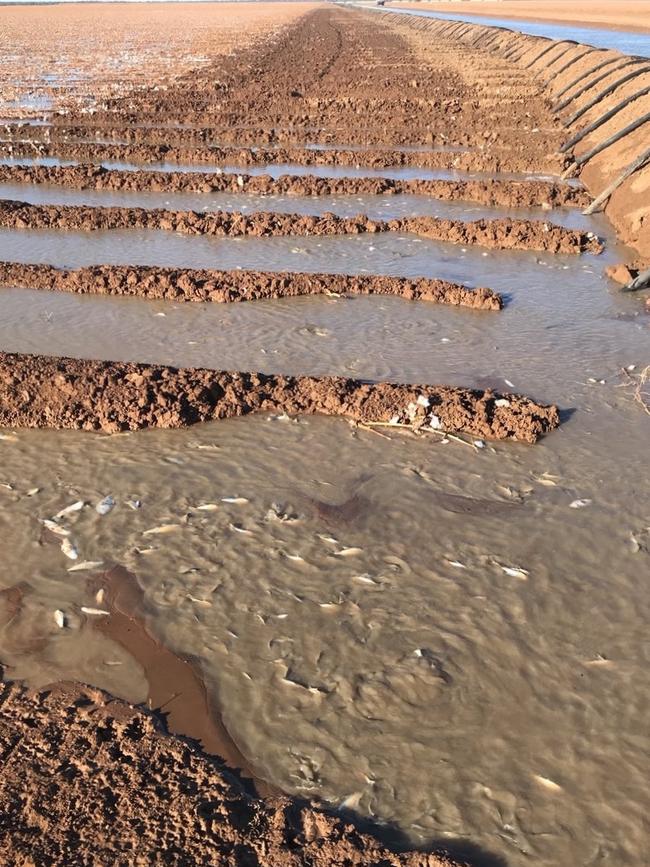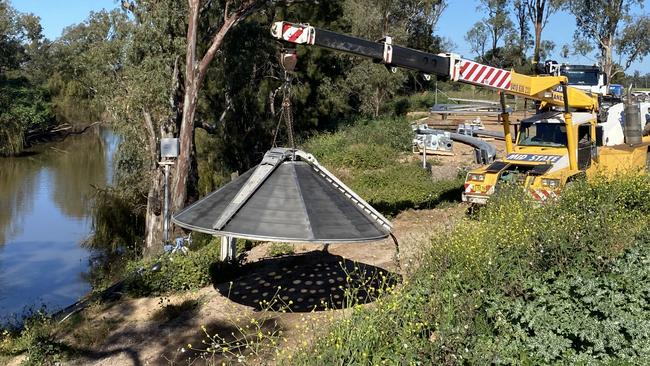Murray-Darling Basin fish screens on irrigation pumps to stop slaughter
Every year, millions of native fish are sucked into irrigation pumps, pipes and channels in the Murray-Darling Basin, clogging filters or ending up as fertiliser. But there is a solution: self-cleaning fish screens.

SA News
Don't miss out on the headlines from SA News. Followed categories will be added to My News.
- Murray River running out of native fish in the drought and heat
- How to get the most out of your Advertiser subscription
Irrigation pumps and channels in the Murray-Darling Basin are killing an estimated 100 million native fish every year, research shows, prompting states to work together to fix problems with fish screens.
The SA scientist on the Australian Screen Advisory Panel, Chris Bice from the SA Research and Development Institute, says the fish screens are a win-win solution for the environment and industry.
“Irrigation pumps and diversions, while they are taking water, inadvertently take drifting eggs, larvae and fish including native species like Murray cod and golden perch,” he said. “Those fish aren’t returned to the river, they basically end up on crops.”


Some irrigators employ people simply to drive around clearing fish and other biological waste (even turtles and platypus) from their irrigation infrastructure.
Trials on pump offtakes show how quickly the numbers add up. One of the smaller pumps on the Namoi River in NSW sucked up 240 fish a day, another on the Condamine in Queensland took 12,000 fish in a nine-hour period.
“When you extrapolate that out to the number of pumps that are actually out there, it’s a pretty significant number of eggs and fish that are being removed from the water every year,” Mr Bice said.
“So it puts pressure on native fishes that are already impacted by other pressures as well.”
Fish screens have been used in parts of the US, Europe, and New Zealand for 50 years or more, but in SA, Mr Bice says, “it’s all pretty new”.

The Department of Environment and Water says there are 4470 offtakes along the Murray River in SA including multiple offtakes for town water including Adelaide.
The Basin Authority Native Fish Recovery Strategy calls for fish-friendly infrastructure.
“There is a need to raise awareness of best-practice screening, which is applicable to all types of offtakes, and that water users can install to save time and money, as well as protect native fish,” the June report states.
“It will be important to identify and address institutional barriers that may prevent widespread adoption of fish screens”
This would include considering “incentive, subsidy or funding schemes to assist with uptake,” the report states.
RecFish SA chairman Mick Wilson, representing the state’s 277,000 recreational fishers, is keen.
“It is amazing that adequate protection is not provided on the irrigation and water supply pump intakes,” he said.
“Full support for high priority actions to minimise if not eliminate this problem should be undertaken and funded.”
Fish ecologist Dr Craig Boys at the NSW Department of Primary Industries has led Australian research and development in this area for more than a decade.
“Every year we lose millions of native fish from our waterways, they’re sucked into pumps and they’re diverted down channels,” Mr Boys said.
“With these fish come sticks, stones, duckweed, rubbish that chokes pumps, clogs filters and siphons and blocks sprinklers.”
He is developing Australia’s first standardised design criteria for fish protection screens with AWMA Water Control Solutions in NSW, but Mr Bice says there’s nothing to stop local manufacturers getting in on the act.

